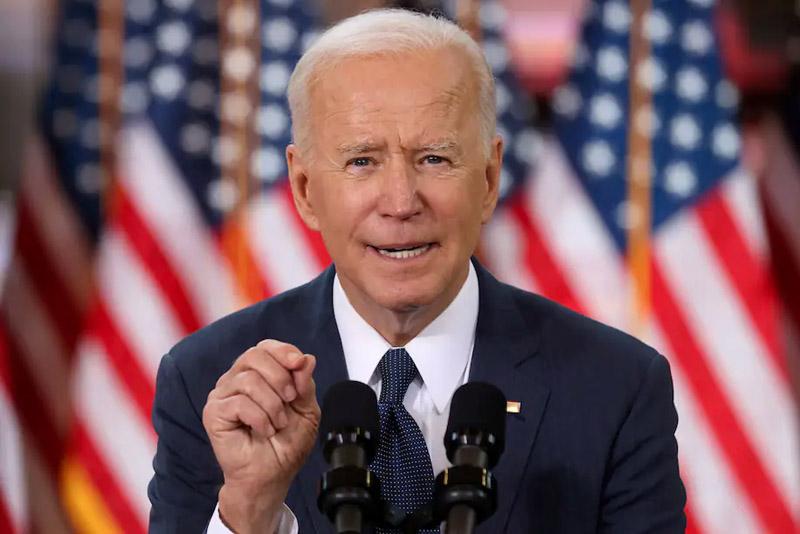Biden’s plan for electric cars is already outdated
By: Levi Tillemann (Washington Post)


Joe Biden is playing to the media and wants to score a win. Biden's emphasis on electric vehicles is more political show than a practical policy.
Electric vehicles haven't matured sufficiently to the point of incremental improvements as with gasoline powered vehicles. Electric vehicles are still subject to disruptive innovation and very rapid obsolescence. Charging stations could become as old-fashioned as buggy whips. Large government investment in technology that has not reached maturity almost guarantees quick obsolescence. The grand project can quickly become a waste of money and effort. China is already working to make Biden's investment in fast charging stations obsolete before the legislation has even been enacted.
Vehicles powered by fuel cells are still being developed. Hybrid electric vehicles are still being developed. Hydrogen powered vehicles are still being developed. Other power sources such as nuclear 'batteries' are being developed. Research and development of electric vehicles is still in innovative flux and it's far too early to declare a single technology winner.
The practical approach would be to support hybrid electric vehicles that can utilize the existing fuel and power supply while investing in research and development.
Joe Biden's obvious desire is to make a political statement about government doing big things. The political method of just throwing large amounts of public money at an issue isn't a solution even though it receives plaudits from the financial sector. Sometimes that approach is a big mistake that cannot be corrected.

As part of its $2 trillion infrastructure package, the Biden administration wants to spend $174 billion on electric vehicle materials, manufacturing and supply chains — and to install 500,000 EV fast-charging stations across the country. Fast chargers are clearly a priority for Democrats in Washington: Earlier this year, the House Energy and Commerce Committee folded big charger subsidies into its Clean Future Act; Ways and Means is devising new tax credits for chargers; and a bipartisan group of Senators recently introduced a bill that would raise tax credits for EV fast chargers from $30,000 to $200,000 per unit. At that price, Biden’s half million chargers would cost $100 billion.
The intention here is good, but these efforts could strand America behind the international curve. That’s because they ignore a burgeoning global trend in EV charging: a shift toward battery swapping. This simple, powerful mode of EV refueling uses robots to physically remove empty batteries and replace them with fully charged batteries — much as you would change the batteries in a flashlight. It’s already propelling the spread of scooters, electric rickshaws and EVs throughout China and much of the world, even as we struggle to make less efficient charging technology succeed here in America.
The concept of battery swapping was introduced 110 years ago by the Hartford Electric Light Company (a subsidiary of General Electric) to address a stubborn challenge of electric cars: long charge times. By separating an EV battery from the vehicle, the operator could slowly charge the battery, then quickly swap it in for a depleted battery — dramatically accelerating the process of EV refueling. But by the 1910s, the internal combustion engine rendered swapping obsolete. And for a century, the electric car was largely ignored.
Today, EVs are back and we have once again learned that for many drivers, plugging in and waiting isn’t a great solution. Most people don’t have a place to plug-in overnight. This includes many low-income Americans who live in apartment buildings and park on the street. And those who need to recharge quickly because they travel cross-country or drive for a living can’t spend precious hours just waiting around.
“Fast chargers” represent an incomplete solution at best, partly because the name is a misnomer: they still take roughly an hour to charge. This creates a cascade of practical and economic challenges. Long charge times mean that fewer people can, or will choose to, charge. In fact, recent research from the University of California at Davis shows that American EVs drive only half as many miles as gasoline-powered vehicles. At a House Transportation and Infrastructure hearing in March, the CEO of Flying J truck stops, which operates fast chargers, conceded that utilization rates are “way below 1 percent.” With installation costs ranging from $50,000 to over $300,000 and high operational costs, chargers are a much tougher business than gas stations.
But battery swapping is different. Because it’s fast, it eliminates the time penalty for charging an electric car and increases the number of customers who can use it. It doesn’t really matter how long it takes batteries to charge, because consumers don’t sit around waiting for them. And because battery swapping stations are, in essence, large energy storage devices, they can capture and store intermittent solar and wind energy. In contrast, a fast charger without battery backup will rely on the grid to dispatch electricity on demand, and roughly 60 percent of that energy still comes from natural gas and coal.
The contemporary resurgence of battery swapping began in China, where it was used to support fleets of electric bicycles — a market that boomed in the 2000s. By 2015, the Taiwanese company Gogoro had applied the concept to a zippy fleet of electric scooters. As of 2018, the Indian mobility company Ola had clocked 4 million kilometers on swap-enabled electric rickshaws. More recently, a consortium of European micromobility companies agreed to battery swap standards for e-scooters. Europe’s largest scooter network, Voi, proclaimed that swapping means “scooters are available on streets longer and require no down time for charging, meaning smaller fleet sizes.” Not only does this translate into lower materials and manufacturing emissions, but shuttling around keyboard-sized batteries also produces far fewer emissions than shuttling around human-sized scooters.
The transformational potential of battery swap is most evident in China, which is deploying automotive battery swapping infrastructure at breakneck speed and audacious scale. China sells about three times as many EVs as America does annually and has 16 times as many fast-charging stations, having already built 309,000 fast chargers (two-thirds of the way to Biden’s EV charger goal). Yet Chinese automakers have also publicly announced plans for swap stations capable of refueling well over 10 million cars per week, and they can already support about a million vehicles. The downside of China’s EV swap stations is that they still use big robots to swap big batteries, and these sport a big price tag — an issue that helped sink the now-defunct Israeli battery-swap company Better Place. Additionally, they generally work with only one brand of electric vehicle, because the batteries are not standardized across brands.
But here in America, we are already rolling out the next generation of battery swapping infrastructure. It is smaller, cheaper and much more flexible. Uber drivers in the San Francisco Bay area are using battery-swap stations built by my company, Ample. We use swap stations that economize on cost and space. We do this by eliminating the massive battery pack found in modern EVs and replacing it with lots of smaller Lego-like batteries that can be easily stacked in various configurations. That means the system can work with virtually any electric car. Different approaches to battery swap technology are also being developed in Europe.
Such fast battery-swap systems aren’t currently included in Biden’s EV plan, which focuses exclusively on fast charging. But if America plays its cards right, it can learn from EV progress in Europe, China and India — and even outpace them.





Joe Biden wants the government to do big things. But doing the wrong thing will only be a big government mistake.
There are still too many disruptive innovations being pursued for the government to pick a technology winner. If the government chooses wrong then the United States will be the big loser.
The United States government could invest in transitioning to an 80 pct alcohol fuel blend. We'd cut our gasoline consumption by 40 pct (maybe more). Bio-waste could be used to produce alcohol and the remaining solids could be used to make paper products and eliminate plastic products. Existing fuel infrastructure could be used with little modification. Existing gasoline vehicles could be converted without difficulty and without great expense. Many vehicles are already flex-fuel capable. That approach would create a lot of jobs, too.
But adopting that approach would mean the United States would be stuck with an alcohol based fuel system. Vehicle manufacturers would be designing vehicles to use alcohol and would essentially be stuck with that technology. The government's investment would stall or even prohibit innovation for other types of power sources for vehicles. The big government investment would stunt developing better solutions. And a disruptive innovation would mean the big investment by government was wasted.
The United States is no longer the technology leader in the world. Other countries are doing innovative research and are pursuing development of those innovations. And the United States is no longer sufficiently influential to impose technology standards onto the rest of the world. The Federal government choosing a technology winner for political purposes poses a large risk that the United States will be left behind.
Need to get with the times.
It's Joe Biden that's stuck in the past.
Could we maybe have both?